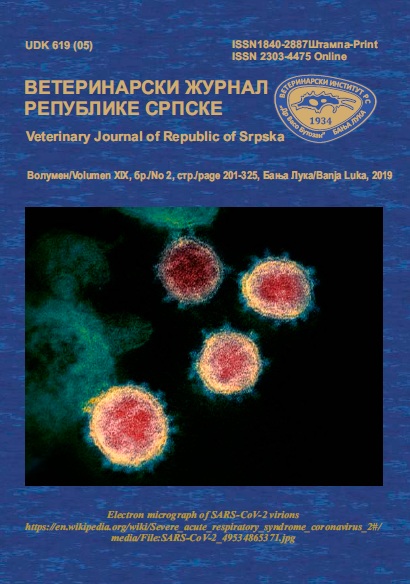RAW MEAT-BASED DIET (BARF) IN DOGS AND CATS NUTRITION
DOI:
https://doi.org/10.7251/VETJEN1902314BAbstract
Diet based on raw meat or more popularly called BARF (Biologically Appropriate Raw Food) is defined as pet food diet that is composed of thermally untreated animal products that are either derived from wild or domestic animals and is used as a pet food diet for pets in households. Raw meat-based diet can be divided into two basic categories: commercially available finished products and diet prepared by pet owner (called homemade BARF). Homemade diets are based on recipes that are enabling the owner to self prepare the diet. Nevertheless, the recepies used do not have to be in coordinance with official recommendations that could potentially result in the development of pathologies as a result of nutrient imbalances. The lack of good quality studies has resulted in a general discussion on the subject of the potential risks and benefits that arise from this feeding practice. Studies have determined higher digestibility and excellent palatability of BARF diets. Nevertheless, studies that would prove beneficial effects of BARF diet on health or as a diet of choice for certain pathologies are lacking. The proponents of BARF diets base their recommendation on studies conducted on a small sample over a short period of time, or on popular publications that have not undergone peer review. On the other hand, research based on evaluation of infectious disease risks when feeding a BARF diet, is of the better quantity and quality. Namely, microbiological safety of BARF diets is a crucial segment that manufacturers are obligated to control with the additional control of all other production procedures (cold chain in all phases of production and storage) to minimize the contamination with zoonotic pathogens.Downloads
Published
2020-05-03
Issue
Section
Енглески

